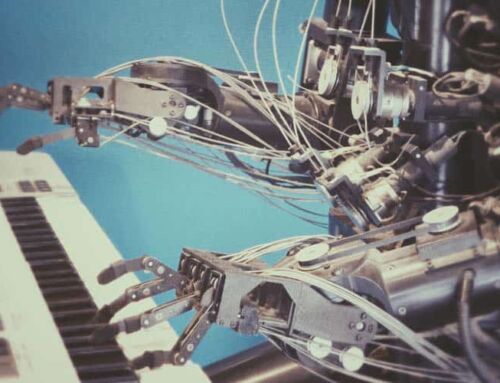When most people think of music, the first thing that comes to mind is the melody. But what about all of the other elements that go into making a song? There’s the beat, the rhythm, the bassline, and the harmony—just to name a few. And then there are the music stems.
So, what are music stems? Music stems are simply each individual element of a song that can be edited or rearranged separately from the others. This gives you incredible flexibility when it comes to creating and remixing songs. You can change the volume, pitch, or timing of any stem without affecting any of the other stems in the song.
This makes music stems an essential tool for DJs and producers alike. With stems, you can create entirely new versions of existing songs or make your own original music. The possibilities are endless!
In simple terms, a music stem is a part of a song that can be isolated and exported as its own audio file. For example, the drum stem of a song would include only the drums without any other instrumentation.
The term “stem” can be used to refer to any number of things in music production. In this article, we’ll be focusing on audio stems—the individual tracks that make up a song. These can include the lead vocal, the backing vocals, the drums, the bass, and so on.
The Four Types of Music Stems
There are four main types of music stems:
- The lead vocal stem: As the name suggests, this stem includes only the lead vocal track. With this stem, you can edit the lead vocal without affecting any of the other tracks in the song.
- The backing vocal stem: This stem includes all of the backing vocal tracks in a song. This is useful if you want to edit the background vocals without affecting the lead vocal.
- The instrument stem: The instrument stem contains all of the instruments in a song, excluding the lead vocal. This is useful if you want to edit the instrumental track without affecting the lead vocal.
- The percussion stem: The percussion stem incorporates all of the percussion instruments in a song. This is useful if you want to edit the percussion track without affecting the other tracks in the song.
These are the four main types of stems in music. However, there are other types of stems as well, such as the Capella stem (which includes only the lead vocal track) and the click track (which is used to keep time in a song). The latter is less common.
Why Use Music Stems?
There are a few reasons why a producer might want to use music stems. First, stems allow you to isolate each individual element of a song. This is useful if you want to edit or remix a song without affecting the other tracks.
For example, let’s say you want to increase the tempo of a song but don’t want to change the pitch. With stems, you can do this by simply increasing the tempo of the percussion stem without affecting any of the other tracks.
Second, stems allow you to create your own versions of existing songs. Suppose you want to create a bootleg of one of your favorite artist’s tracks. You can simply remove particular stems and export them as your own audio file, and then get to work!
Stems are a great tool for learning how to produce music. By exporting the individual tracks of a song, you can get a better understanding of how the song was produced and what processes go into making it sound the way it does. Understanding this tool is an invaluable resource for aspiring producers and sound engineers.
Finally, stems are a great way to share your music with other people. If you’re a music producer, you can share the individual tracks of your songs with other producers so they can remix or edit them as they see fit.
This is also a great way to get feedback on your audio production and to collaborate with other DJs or producers.
How to Use Music Stems
Now that you know what music stems are, it’s time to learn how to use them. Here are a few tips to create stems:
Know Your DAW
A DAW is a piece of software that allows you to record, edit, and mix audio used by mastering engineers. It’s what you’ll use to create your own individual stems.
There are a plethora of different DAWs on the market, so do some research to find the one that’s right for you. Some of the most popular options include Ableton Live, Logic Pro X, and Pro Tools.
To get started, you’ll need to learn how to create and edit audio tracks in your DAW. This will come in handy when you’re ready to start working with music stems.
Find High-Quality Stems
Once you have a DAW up and running, it’s time to start looking for some high-quality stems. The best place to find stems is on the internet. There are a number of websites that offer stems for purchase or download.
When searching for music production stems, make sure to look for ones that are high-quality and compatible with your DAW. You should also try to find stems that have been professionally recorded and mixed. This will make it easier to create a polished final product.
Edit and Arrange the Stems
When you have all the stems, it’s time to start editing and arranging them. This is where the real fun begins!
Start by loading the stem files into your DAW. Then, get creative and start rearranging them however you see fit. You can change the order of the stems, add effects, or even delete some of them altogether. The possibilities are endless!
Usually, the best way to start is by editing the lead vocal stem. This will give you a good foundation to work from. Or, if you’re feeling creative, you can start from scratch and build the song up from the ground.
Export Your Creation
This will allow you to save them as audio files that can be played back on any device.
When you export stems, make sure to choose a high-quality format such as WAV or AIFF. This will ensure that your song sounds great when played back on different devices.
Share Your Song
Your song is finished and sounds great! Now it’s time to share the final mix with the world. You can upload your song to SoundCloud, Spotify, Bandcamp, or any other music-sharing platform.
In Conclusion…
Music stems are a powerful tool that gives electronic producers complete control over their songs. With stem mastering, you can create remixes, edits, and bootlegs of existing tracks or make your own original music once you’re ready.
So, what are you waiting for? Get out there and start growing as a creator with music stems!

Free Guide: 8 Ways Having a Coach Can Help You Become More Successful in Music
This guide shares eight ways hiring a coach can make you a more successful, profitable, and full-time music creator.
When you understand how a music career coach can get you farther, you’ll be ahead of other music creators growing their music career.
Free Guide: 8 Ways Having a Coach Can Help You Become More Successful in Music
This guide shares eight ways hiring a coach can make you a more successful, profitable, and full-time music creator.
When you understand how a music career coach can get you farther, faster, you’ll be ahead of other music creators attempting to grow their music career.


![5 Top Solutions for Mixing and Working in Dolby Atmos [Repost]](https://turnuptoeleven.com/wp-content/uploads/2023/06/alexpromix-dolby-atmos-recording-magazine-alex-solano-900x500-1-500x383.jpg)
